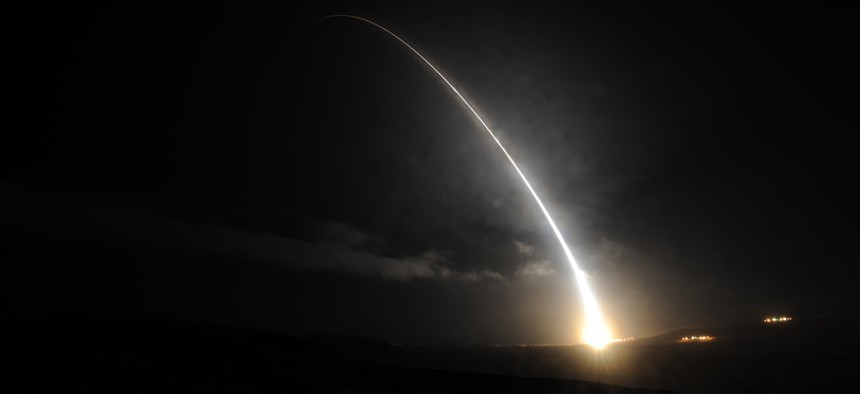
U.S. Air Force, Michael Peterson
America’s War-by-Airstrike in Three Charts
The U.S.-led air war against the Islamic State in Mosul, Raqqa, and the region, visualized.
The 12,633-plus airstrikes conducted by U.S. warplanes against the Islamic State underline what U.S. Air Force chief Gen. David Goldfein said at last week’s Defense One Summit: Airpower is central to today’s counterterrorism wars.
“Whether you want to talk about global vigilance, reach or power, what the air component … brings to the joint force has really become like oxygen,” Goldfein said. “And like oxygen, when you’ve got it, you don’t even think about it, but when you don’t have it, that’s all you think about.”
Coalition partner aircraft have contributed another 3,658 strikes since the war on ISIS in Iraq and Syria began in August 2014, according to data released by U.S. Central Command.

A look at CENTCOM data for Oct. 6 to Nov. 5 in Syria shows an average of about eight strikes a day, scattered across the country. That changed Nov. 6, when the U.S.-backed Syrian Democratic Forces announced they were starting the campaign to isolate the ISIS stronghold of Raqqa. There was an immediate spike in coalition strikes to support the SDF’s push south from Tal Abyad and Ayn Isa. On Nov. 6, there were 16 strikes in the vicinity of Ayn Isa; followed by daily totals of 15, 7, 13, and 11. Put another way, the push on Raqqa triggered more strikes in the area than there had normally been throughout the rest of the country.

Strikes around Ayn Isa have since continued, around seven per day.
“In anticipation of the advance on Raqqa, [the Islamic State has] created a significant number of fighting positions — they have formations, groups of fighters positioned to try to harass the advance,” Operation Inherent Resolve spokesman, Air Force Col. John Dorrian, told reporters last week. “We’ve taken every opportunity to remove those from the battlefield.”
Backed by those strikes, Dorrian said, the SDF had retaken 321 square kilometers, but the coalition expects “resistance to stiffen as forces move closer” to Raqqa. That means the sustained concentration of airpower will continue for months — particularly if the effort to retake Mosul is any indication.
In the three weeks after Oct. 17, when the drive on Mosul began, 28 percent of the anti-ISIS airstrikes fell on or around the city.

That was 95 strikes, but that figure doesn’t fully represent the magnitude of the campaign. A “strike,” as defined by CENTCOM, can be anything from a single aircraft dropping one bomb to “multiple aircraft delivering dozens of weapons,” as long as they’re all in “roughly the same geographic location.” At its extreme, that can mean days like Oct. 21, when four strikes around Mosul hit a total of 90 targets, according to an Airwars report.
That pace of operations is both “a challenge and an opportunity,” Goldfein said at the Summit, especially given that strikes are just one part of U.S. airpower’s support for the advance.
“We’re working with Iraqi security forces at the pace they’re able to go in … providing precision airpower and intelligence, surveillance, reconnaissance, command and control, all the things airpower brings to the fight,” he said.




